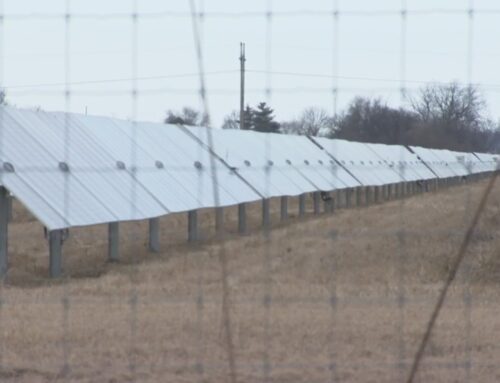SC bans retrospective environment permits
May 17, 2025
SC bans retrospective environment permits
The Supreme Court invalidated retrospective environmental clearances, emphasizing that development cannot compromise environmental protection.
The Supreme Court on Friday struck down Centre’s office memorandums and notifications that allowed retrospective environmental clearances to projects that began without mandatory approvals, holding that development cannot come at the cost of the environment.

The ruling reinforces the sanctity of the environmental assessments process for construction and mining work and the principle of precautionary protection, experts said, welcoming the decision.
A bench led by Justice Oka ruled that projects that commenced without obtaining mandatory prior environmental clearance cannot be regularised by granting them clearance in future. The 2017 notification that first allowed this and a 2021 office memorandum, along with all related circulars and orders, were declared “illegal and hereby struck down” while restraining the government from issuing any similar provisions.
“There are no equities in favour of those who committed gross illegalities without obtaining prior environmental clearances,” Justice Oka said while reading the operative portion of the judgment. “The persons who acted without clearances were not illiterate persons. They are companies, real estate developers, public sector undertakings, mining industries… who knowingly committed the illegalities.”
The bench, also comprising justice Ujjal Bhuyan, added that, “hereafter the Central Government shall not come out with any version of the 2017 notification which provides for grant of ex-post facto EC (environment clearance)”.
HT reached out to the ministry of environment forest and climate change for a response but did not get one immediately.
The issue relates to what was released through a 2017 notification as a “one-time opportunity” for six months for industries to seek ex-post facto (after-the-fact) environmental clearance as part of the mandatory environment impact assessment (EIA) for industries and projects.
In 2021, and then in a follow up memorandum in 2022, the internal directives extended and systematised the approach, creating what activists said was a regularisation mechanism for violating projects. Critics stated this effectively established a parallel pathway for environmental compliance—one that allowed projects to begin first and seek approval later, contradicting the preventive intent of the EIA framework.
To be sure, Friday’s verdict, which came on petitions filed by NGO Vanashakti and others, clarified that environmental clearances already granted under the now-invalidated rules would remain unaffected.
The bench said “the 2021 OM talks about the concept of development. Can there be development at the cost of environment? Conservation of environment and its improvement is an essential part of the concept of development.”
The 2021 memorandum, the court added, was “an attempt to bring in an ex-post facto or retrospective regime by craftily drafting the SOP… we have no manner of doubt that the 2021 OM which permits grant of EC is completely arbitrary and illegal”.
The ruling came down on the government for “going out of the way” in order “to protect those who have caused harm to the environment”. This, it said, “has to be deprecated by the courts which are under a constitutional and statutory mandate to uphold the fundamental right under Article 21 and to protect the environment.”
Article 21 of the Constitution guarantees the right to protection of life and personal liberty.
On past cases on this issue, the bench noticed that the matter of ex-post facto EC has been dealt with in two earlier decisions; in Common Cause (2017) and Alembic Pharmaceuticals (2020), where it was held that such approvals is “completely alien” to environmental jurisprudence.
Environmental activists welcomed the judgment as a significant victory for ecological protection. “The judiciary has upheld the constitutional obligations of the state to protect the environment and forests. The balance should always be in favour of conservation. You cannot give a freehand to environmental destruction and incentives to people who destroy. The court has correctly observed that people involved in these violations are literate, wealthy and powerful who knew the consequences. We are so thankful that judiciary saw through this game,” said Stalin D, director of Vanashakti.
Stalin emphasised the practical impossibility of undoing ecological damage: “Once you lose an ecologically important area, how can you recreate it? You destroy a mountain, how do you recreate it?”
Debadityo Sinha, lead-climate & ecosystems at Vidhi Centre for Legal Policy, described the verdict as “a victory for environmental rule of law” that reinforces the mitigation hierarchy of “avoid, minimise, restore, offset” in development projects.
“The practice of granting post-facto environmental clearance subverts this process, violates the Precautionary Principle, and is ultra vires the parent legislation—the Environment (Protection) Act, 1986,” Sinha said.
The ruling marks a significant departure from a March 2022 Supreme Court judgment, which had permitted ex-post facto clearances “in exceptional circumstances” while setting aside a National Green Tribunal order on closure of non-compliant industries.
Debi Goenka, executive trustee of Conservation Action Trust, offered a more measured response:
“The order sounds great on paper, but it is actually seems meaningless since all the violators have got away scot free along with the decision makers who have connived with them. In contrast, the Order issued by the Bench headed by Chief Justice Gavai yesterday has mandated the return of the lands illegally allotted, and if that is not possible, payment of costs and penalties. I do hope this Order also includes similar provisions (since the actual Order is still not available). However, one of the fundamental principles of law is that you cannot benefit from your own illegality— even that principle seems to have been forgotten.”
The ministry of environment, forest and climate change had previously justified the provisions as necessary to bring violating projects “under the environmental compliance regime” rather than leaving them “unregulated and unchecked.”
In its March 16, 2017 statement, the Ministry described the notification as providing an opportunity to bring “such projects and activities in compliance with the environmental laws at the earliest point of time” while emphasising that “the process for such violators has to be stringent and punitive.”
Industry representatives reacted negatively. “Ex post facto applications which were under consideration by the ministry should have been allowed since the memos allowed these with penalties. This will now have economic impacts. We should consider that too,” said BK Bhatia, additional secretary general, Federation of Indian Mineral Industries (FIMI).
Search
RECENT PRESS RELEASES
The Best Stocks to Invest $1,000 in Right Now
SWI Editorial Staff2025-12-16T17:27:40-08:00December 16, 2025|
5 Investing Surprises From 2025
SWI Editorial Staff2025-12-16T17:27:11-08:00December 16, 2025|
Meta is making ‘AI core to how we work’ with the help of Google and OpenAI
SWI Editorial Staff2025-12-16T17:26:35-08:00December 16, 2025|
After A Decade On Ethereum, Why MetaMask Is Finally Embracing Bitcoin
SWI Editorial Staff2025-12-16T17:25:54-08:00December 16, 2025|
New Yorkers Are Paying for a Massive Grid Rebuild. Who Benefits?
SWI Editorial Staff2025-12-16T15:35:48-08:00December 16, 2025|
State Energy Plan Undermines Emissions Goals and NYC, Experts Say
SWI Editorial Staff2025-12-16T15:35:15-08:00December 16, 2025|
Related Post





